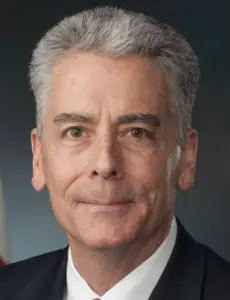
Following the release of the Department of Defense’s 2020 Annual Suicide Report, Secretary of Defense Lloyd Austin stated that “the trends are not going in the right direction.”
While there has been a slight two-year decline in suicides nationwide, the number of suicides in the military has increased. From 2015 to 2020, suicides among veterans rose by 40 percent.
According to more recent research, 30,177 active personnel and veterans who served post-9/11 died by suicide in 2021. To put that into context, 7,057 soldiers died in combat during that same period.
Links Between TBIs and Risk for Suicide
There is no simple solution, but more attention must be focused on not only understanding why the suicide prevention programs aren’t working, but also developing dramatically improved detection, prevention, and treatment programs and therapies for soldiers.
As part of this equation, we must continue to examine the link between traumatic brain injuries (TBIs) – including mild TBIs (mTBIs) or concussion – and increased risk for suicide. Of the almost 459,000 service members diagnosed with a TBI worldwide between 2000 and Q1 2022, over 82 percent had concussions.
To develop effective therapies, we also need a better understanding of the distinct types of brain injuries: blast and non-blast.
Over 50 percent of TBIs in combat are from blasts, whereas in non-deployed settings, moving motor vehicles, sports, parachutes, and being struck by objects are the top causes.
A 2019 study demonstrated that blast-related TBI differs from TBI caused by blunt impact. Compared to control TBI cases, blast TBI injury shows unique astroglial scarring due to the injuries.
Post-concussion symptoms, including headaches, brain fog, sleep disorders, behavioral changes, and vision and hearing impairment, can be ongoing and debilitating.
A recent study published in the Journal of Head Trauma Rehabilitation notes that previously estimated annual costs of between $591 and $910 million for US combat-related TBIs are now thought to be much higher.

Therapy for TBI
Tremendous strides have been made with other diseases thanks to the government’s commitment to invest in research to find cures. Yet there are still no FDA-approved drug therapies for TBI.
Despite the end of our combat missions in Iraq and Afghanistan, the physical, mental, financial, and societal toll continues long after our soldiers have returned home.
We urgently need a stronger commitment from the government to TBI prevention and to the research of both blast and non-blast concussions that will further our understanding of the brain and improve how we both diagnose and treat TBIs.
If we are to honor our veterans, we need to commit to finding and implementing effective solutions. It is a matter of life or death.
 Frank Larkin, the chairman of Warrior Call, is a former Navy SEAL and the father of a Navy SEAL who died by suicide. He also served as the 40th Senate sergeant at arms.
Frank Larkin, the chairman of Warrior Call, is a former Navy SEAL and the father of a Navy SEAL who died by suicide. He also served as the 40th Senate sergeant at arms.
 Michael Wyand, DVM, PhD, is the CEO of Oxeia Biopharmaceuticals. Oxeia is conducting Phase 2 human clinical studies for its therapeutic drug, OXE-103, to treat concussions.
Michael Wyand, DVM, PhD, is the CEO of Oxeia Biopharmaceuticals. Oxeia is conducting Phase 2 human clinical studies for its therapeutic drug, OXE-103, to treat concussions.
Disclaimer: The views and opinions expressed here are those of the author and do not necessarily reflect the editorial position of The Defense Post.
The Defense Post aims to publish a wide range of high-quality opinion and analysis from a diverse array of people – do you want to send us yours? Click here to submit an op-ed.











